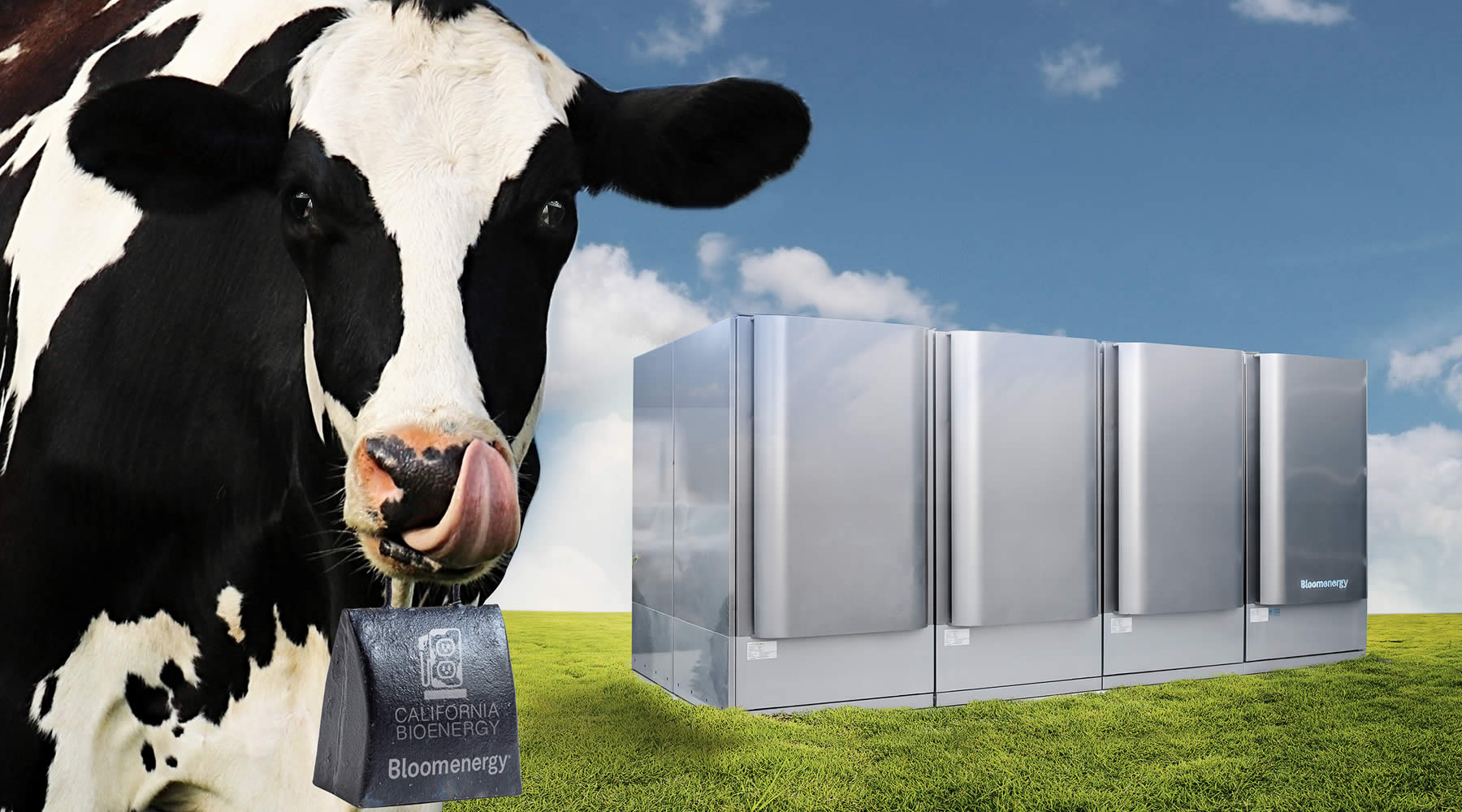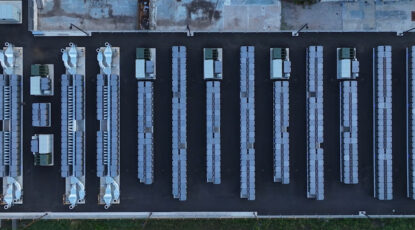Calling all California dairy farmers: there’s a new (and better) way to cut methane emissions and generate income as you do it. Yes, it’s a win-win.
California has created innovative policies that encourage dairy farmers to capture the methane coming from animal waste and convert it into renewable electricity; now, California Bioenergy (CalBio) and Bloom Energy are teaming up to help dairies make the most of their cow manure and these initiatives.
A new fate for greenhouse gases: From emissions to electricity
Ten percent of total U.S. greenhouse gas emissions come from methane, and one of the most common ways the gas is emitted into the atmosphere is through livestock.
We know greenhouse gases pose great threats to climate change because they trap heat in the earth’s atmosphere, causing temperatures to rise on the ground. And in fact, methane is especially threatening as it has a 25 times greater impact on global warming than carbon dioxide emissions.
The California Department of Food and Agriculture (CDFA) and California Air Resources Board (CARB) are focusing on harnessing the greenhouse gas to produce renewable energy. In doing so, dairies can actually help reduce the impact on climate change.
Three things are needed to make this solution work: infrastructure to collect waste, technology to capture the resulting biogas, and technology to cleanly convert it into electricity.
With each of these in place, farmers can not only make a positive impact on California’s climate and environmental goals, but they can also earn an income by selling their renewable power to charge California’s growing electric fleets: cars, trucks, forklifts, trains, and ships.
Silicon Valley and Central Valley team up
Waste collection and biogas capture have actually been done successfully at California dairies. CalBio, the leader in the business, has been partnering with dairy farmers and investing in technologies to capture biogas for more than 10 years.
These technologies are called dairy digesters; CDFA’s initiative — Diary Digester Research and Development Program — supports the installation of digesters through grants that help farmers build the necessary infrastructure. Once infrastructure is in place, microorganisms break down the organic matter and create biogas, which is trapped in the digester.
Steps one and two – check. Now that farmers have captured the methane, what do they do with it?
Step three is where farmers have typically faced challenges. Today, only about two percent of large California dairies actually capture and use the methane from cow manure. It’s been difficult to find ways to efficiently convert biogas into electricity without carbon or smog-forming pollutants and particulate emissions; traditionally, most biogas is combusted in an engine, resulting in emissions that increase the risk of asthma and worsen air quality.
This is where Bloom Energy comes in.
With the help of our partners, we’ve developed a clean-up technology that can cost-effectively and efficiently purify biogas. Agriculture biogas contains moisture and sulphur in its natural state, contaminants that must be removed, or they will cause damage to any electricity generating technology, and be emitted into the air. Our clean-up solution has solved this challenge.
Additionally, because our Servers are the world’s most efficient electricity generating technology, they produce twice as much electricity as conventional combustion generators using the same amount of biogas with virtually no criteria air pollutants.
Once the methane is captured from cow manure in CalBio’s digesters, it can be fed as fuel to Bloom Energy’s Servers, which will generate clean electricity via an electrochemical reaction. Together, these technologies create an end-to-end solution for the capture, clean-up, and generation of renewable electricity from cow manure.
Learn more about Bloom’s biogas solution
Powering electric vehicles throughout California
After renewable electricity is generated, it can go to power electric vehicles (EVs), electric buses, and other electric transportation infrastructure thanks to the structure created by CARB’s Low Carbon Fuel Standard (LCFS) program.

The LCFS program was created to reduce the climate change forming pollution in transportation fuels by setting reduction targets over time, creating higher values for greatest reductions in carbon intensity.
Not only does the LCFS program create additional value for farmers for renewable electricity, it increases the number of EVs throughout California that run on 100 percent renewable power. Participating farmers will make the EV alternative even greener, enabling Californians to make a positive impact on the environment with each commute.
The opportunity to power EVs with cow manure is, well, huge. If all of the economically viable dairy biogas in California was utilized to generate electricity, it would produce more than 300 megawatts of power. That’s enough to power approximately 600,000 EVs, each traveling 15,000 miles per year.
Supporting California’s climate goals and improving local air quality
By pairing CalBio’s dairy digesters with Bloom’s fuel cells, farmers in California cannot only earn money for the electricity they generate, they can also reduce greenhouse gas emissions in the process.
And, the CalBio-Bloom Energy solution not only generates renewable electricity, it removes methane that would have otherwise been released into the atmosphere. Participating farmers that capture and utilize their waste methane in this way will help progress California towards its ambitious climate goals set in AB 32.
Additionally, until now, farmers who have captured their methane have only had the option to combust it, either with an onsite engine or by feeding it into the natural gas pipeline (which leads to the same fate: combustion in cars). With Bloom Energy’s approach, electricity is generated without combustion, and that provides immense benefits for local air quality; and by charging EVs, these electrons give a second local air quality bump in the community where they’re driven.
The Central Valley, in particular, the San Joaquin Valley, has some of the worst air pollution in the country, along with the highest rates for childhood asthma in the state. According to the American Lung Association (ALA), Fresno, Bakersfield, and Visalia have all ranked in the top five most polluted U.S. metro areas for small particle pollution and ozone pollution. However, most California dairies are located in the Central Valley, so farmers have a tremendous opportunity to improve local air quality and reduce criteria air pollutants through these biogas fuel cell projects.
By bringing together the best technologies from Silicon Valley and Central Valley, dairy farmers can lead the fight against climate change and air pollution, further strengthening their role as environmental stewards.



